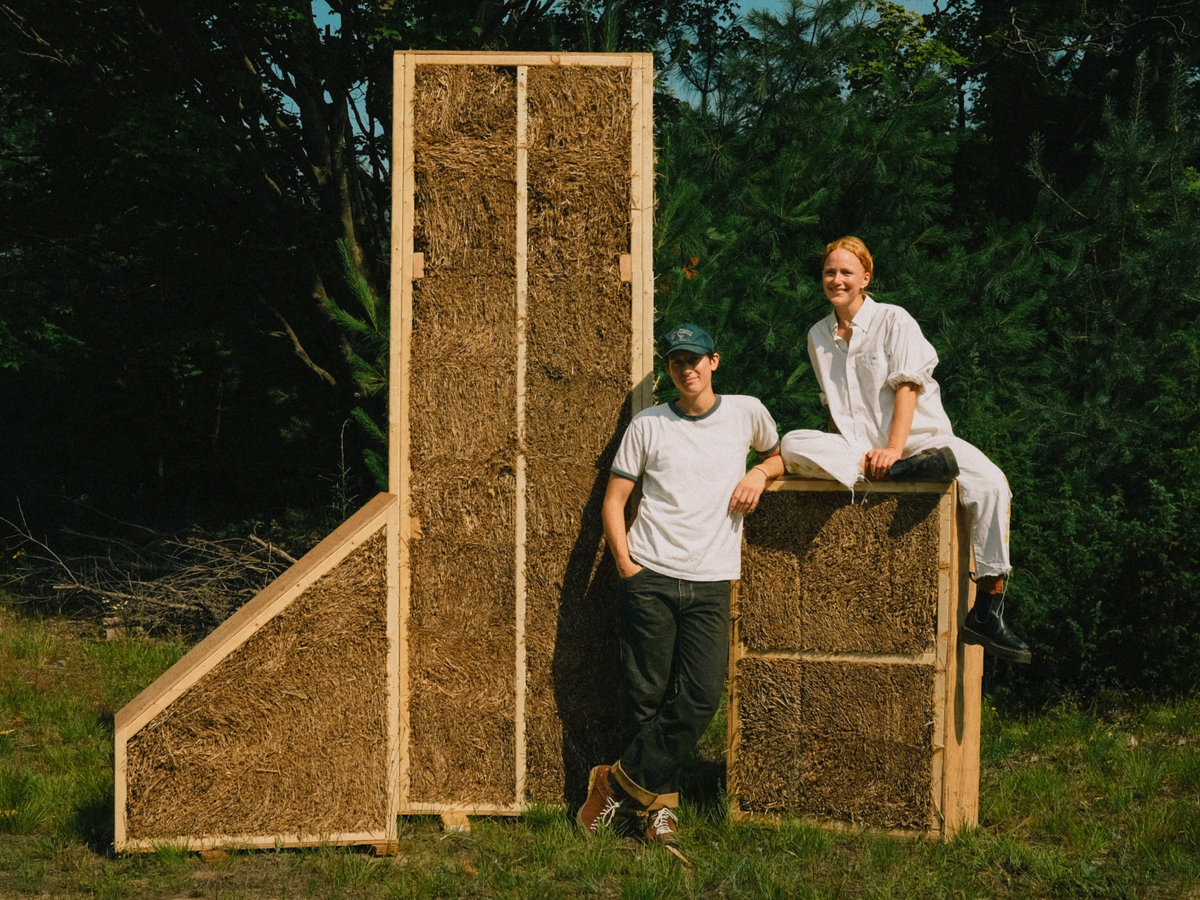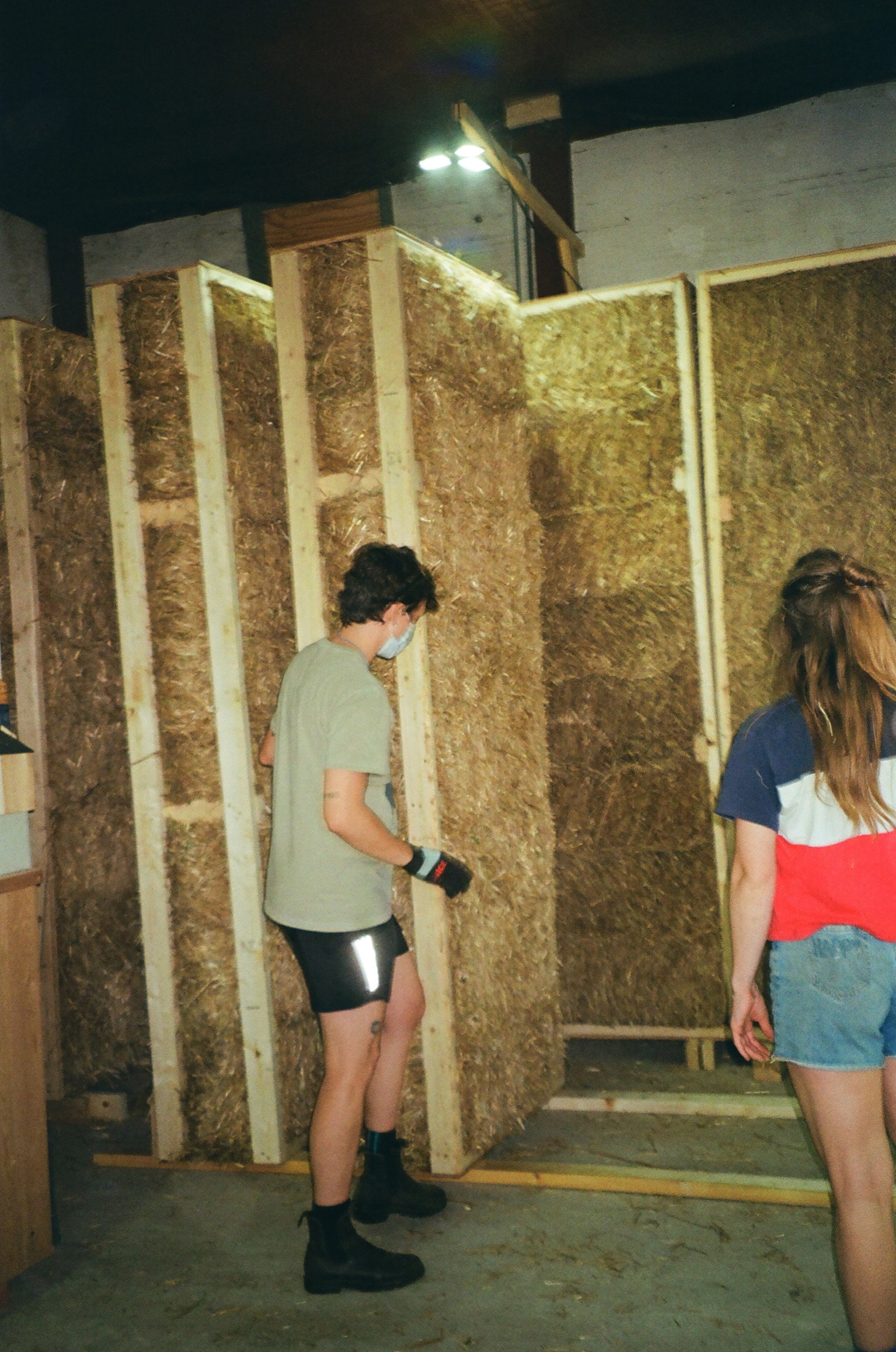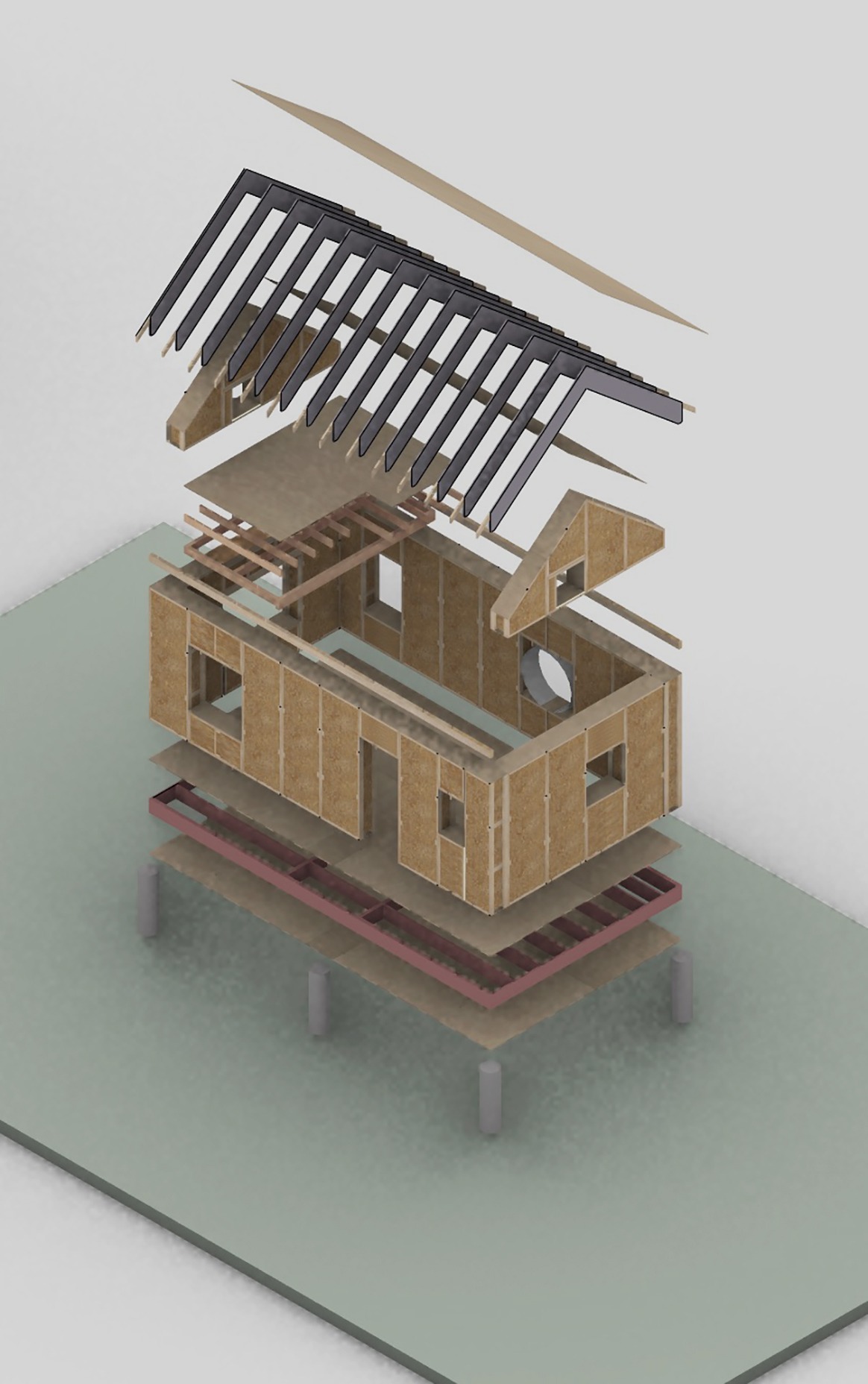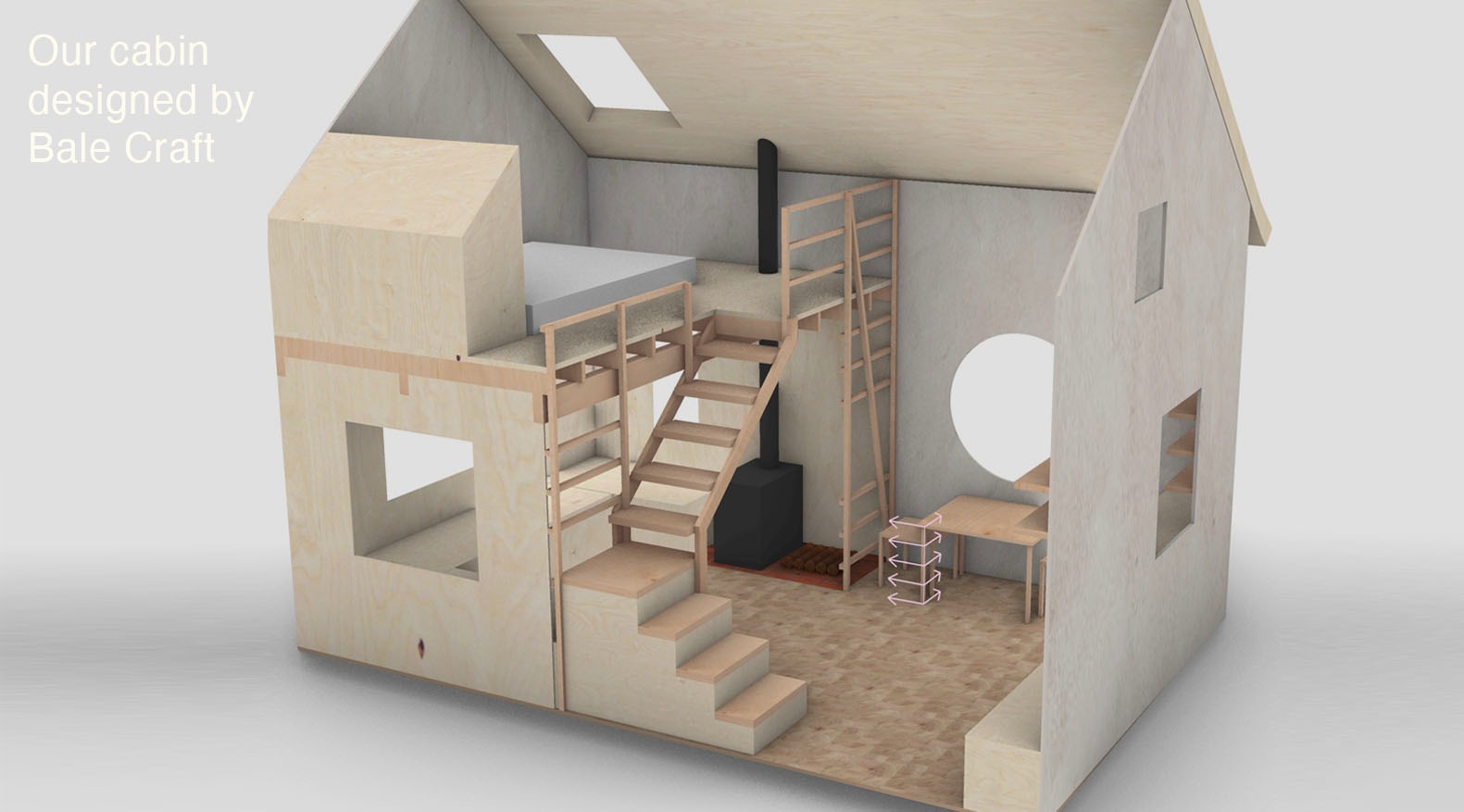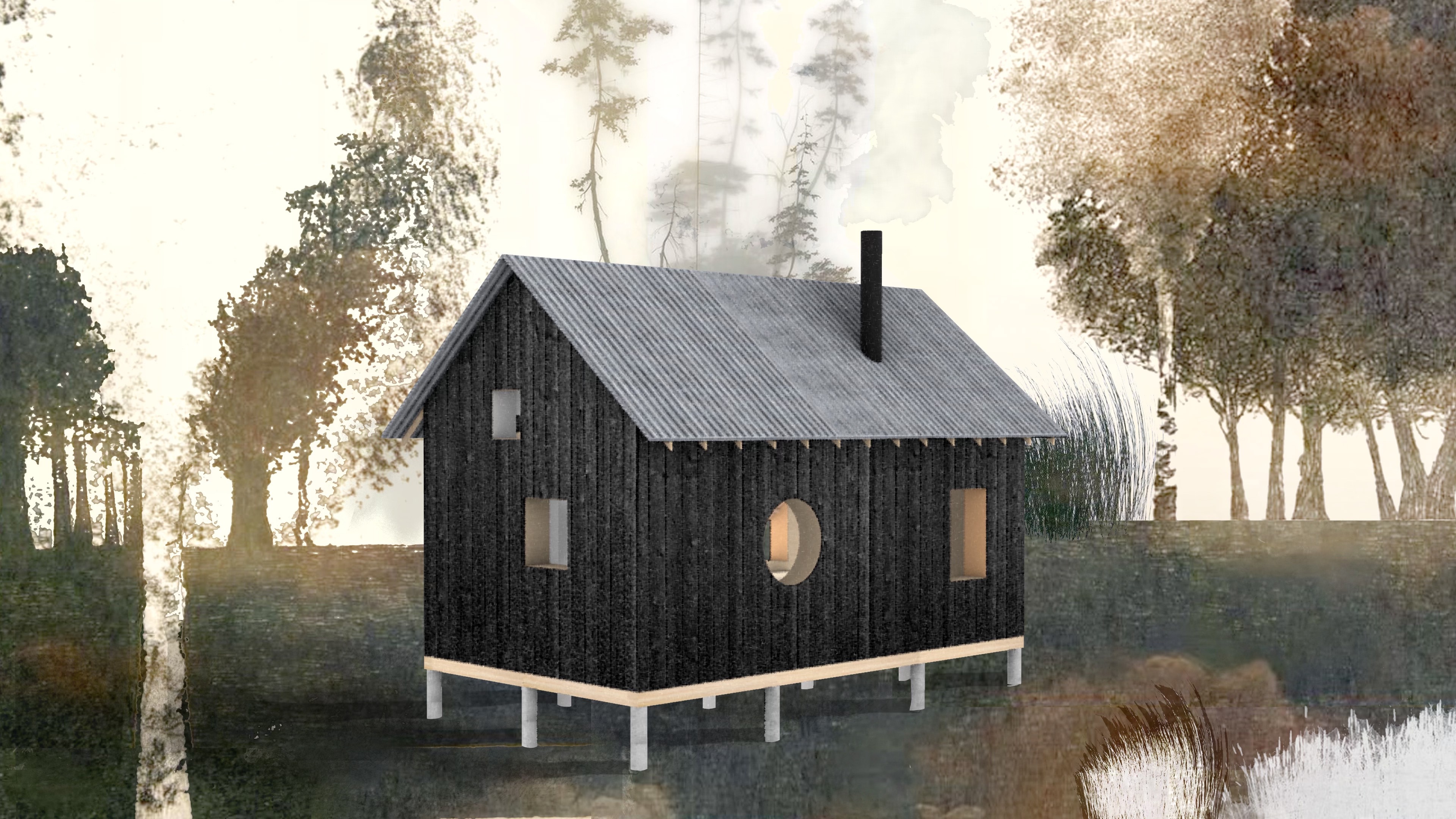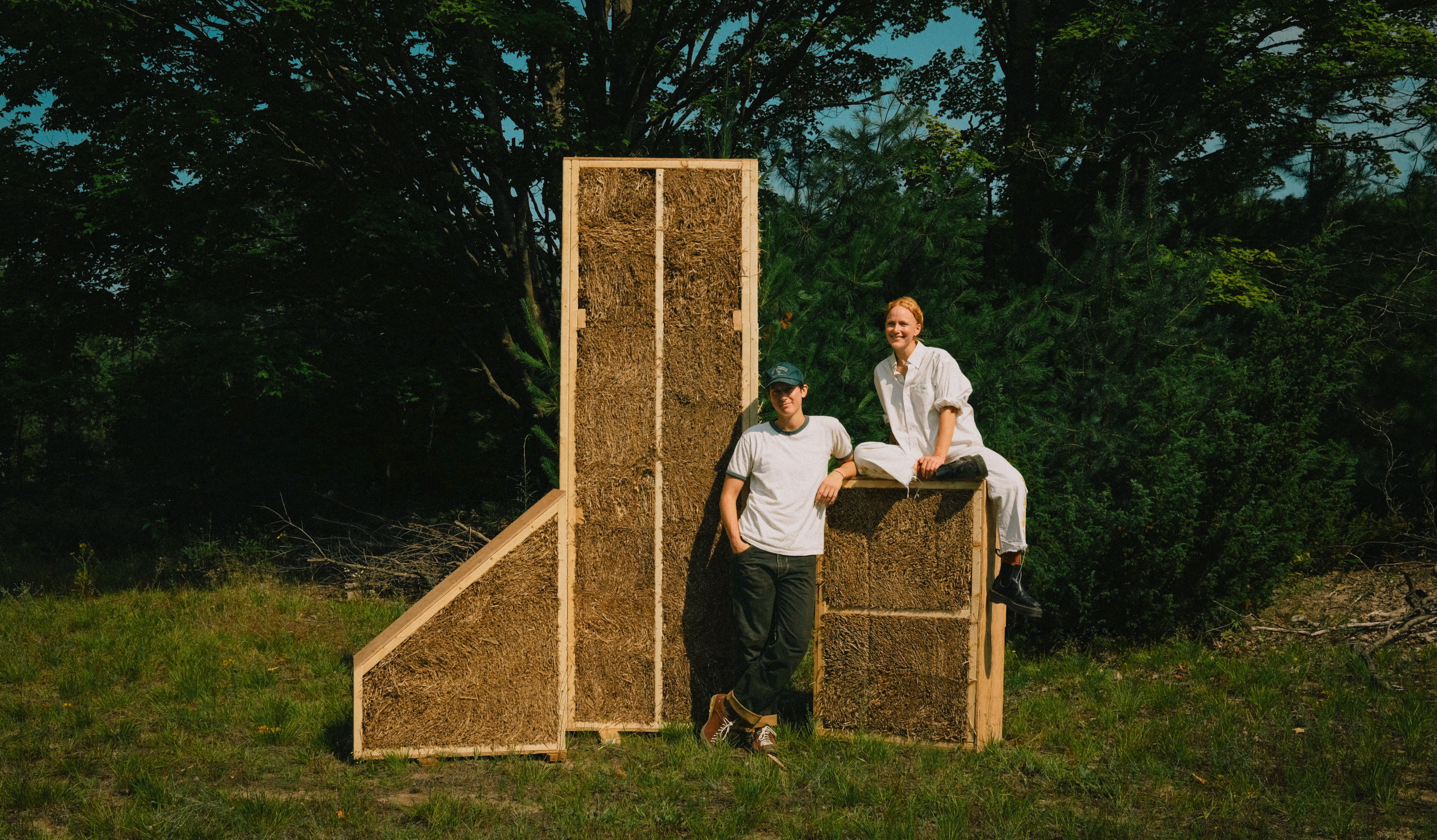We’re aiming to raise $15,000 this month to complete Michigan’s first permitted straw panel cabin—a vital first step in showcasing how straw panelized construction can help address the intersecting climate and housing crises. These panels offer a cost-effective, healthy, and low-carbon alternative for all kinds of buildings: homes and schools, community centers and art spaces.
This cabin will serve as a site for artist residencies and hands-on workshops as well as a prototype for sustainable housing, growing a network of artist-designer-builder-repairers and expanding the reach of regenerative building practices in both rural and urban settings.

Why build this cabin now?
Our planet is experiencing interconnected climate and housing emergencies. The building industry contributes to nearly 40% of global emissions due to fossil fuel intensive materials like concrete, vinyl flooring and siding, fiberglass insulation, and highly extractive deforestation. Investment in luxury single-family houses is on the rise, rent prices are increasing across the U.S. and world while reliable, safe housing for low and middle income households continues to drop.
We believe that straw panelized building is one possible local intervention for these crises.
We decided to partner with Bale Craft to to explore how straw panel construction can provide cost-effective, healthy, and environmentally sustainable solutions for all types of buildings: single and multi-family housing, community spaces, schools, commercial spaces, and art facilities. We began discussions with Bale Craft about this project two years ago with the goal of building a low-cost, beautiful, small, and healthy home that doesn’t harm the land and people around it. While the plan has shifted in scale to a cabin rather than a residential home and prices have taken a steep upturn, that principle has guided us forward. I believe that this building method – practiced at scale – has the potential to benefit entire communities and ecosystems. Bale Craft is based in Traverse City and is Michigan's first straw panel manufacturer, working between architecture, design, sustainable building, and our local ecosystem to improve how we build housing. Click here to visit their website.
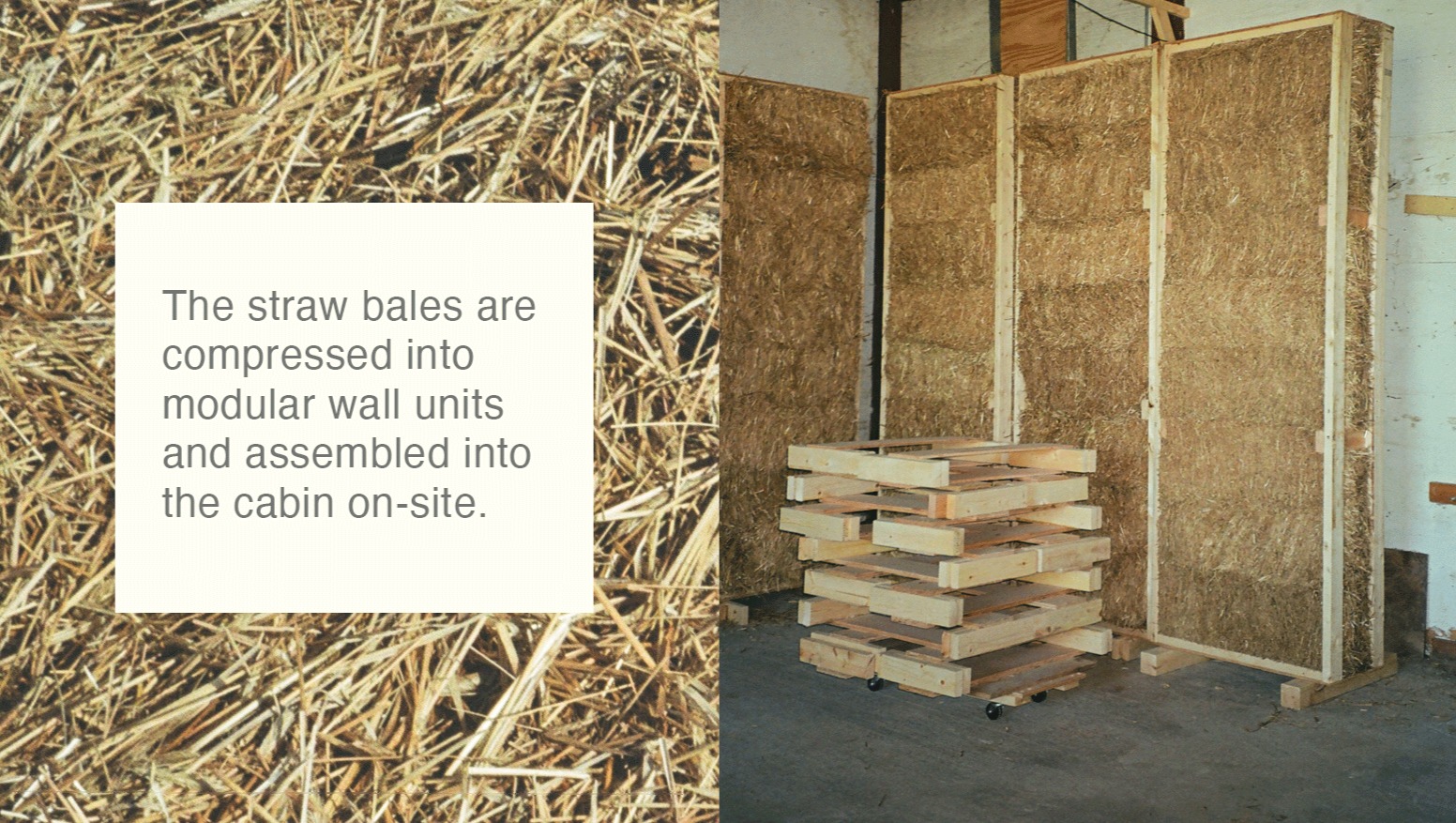
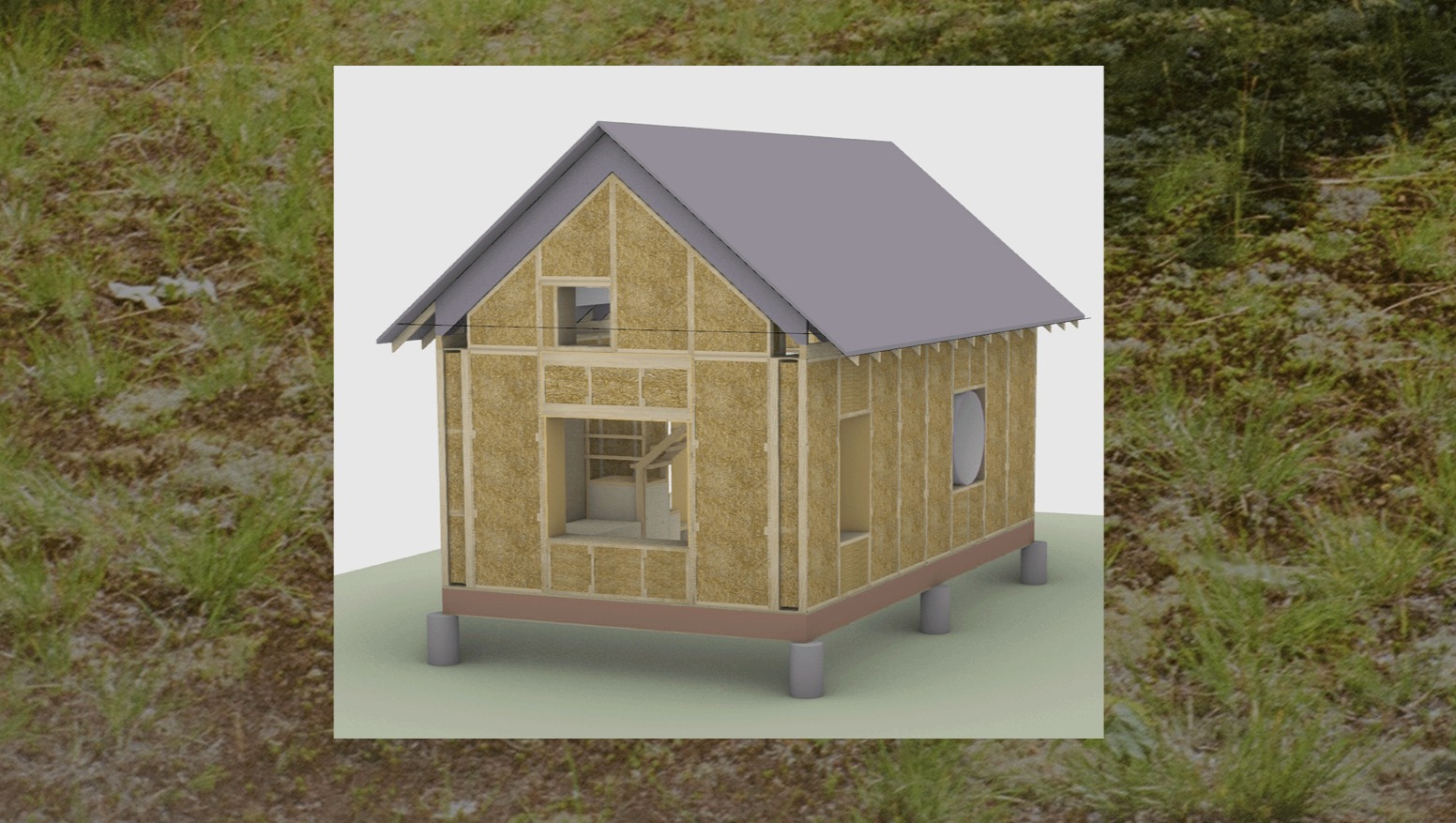
THE PROJECT
We’re building a 388 square foot cabin constructed from straw panels on land I purchased in Benzie County, MI. The project team consists of myself, my partner Ellen, and Sophie and Ellis from Bale Craft , a local company specializing in straw panel building and design. This land — "Another Place" as we call it — is a verdant 10.5 acres of sugar maple and white pine that’s 15 minutes inland from Lake Michigan and 40 minutes south of Sleeping Bear Dunes. The region occupies the ancestral, traditional, and contemporary lands of the Odawa and Anishinabewaki ᐊᓂᔑᓈᐯᐗᑭ people. I've shared a bit more about the place and this project in my newsletter, Another Place Times which you can read here.

Since starting this project last year, we have been doing a lot of the work ourselves alongside Bale Craft. Despite our careful budgeting and planning, sourcing most of our tools from garage sales, and purchasing materials from local suppliers (including straw from within 50 miles of Another Place!), everything is getting more and more expensive. Funding for anything categorized as “environmental”, arts, or LGBTQ is getting slashed, perpetuating instability and raising prices everywhere else.
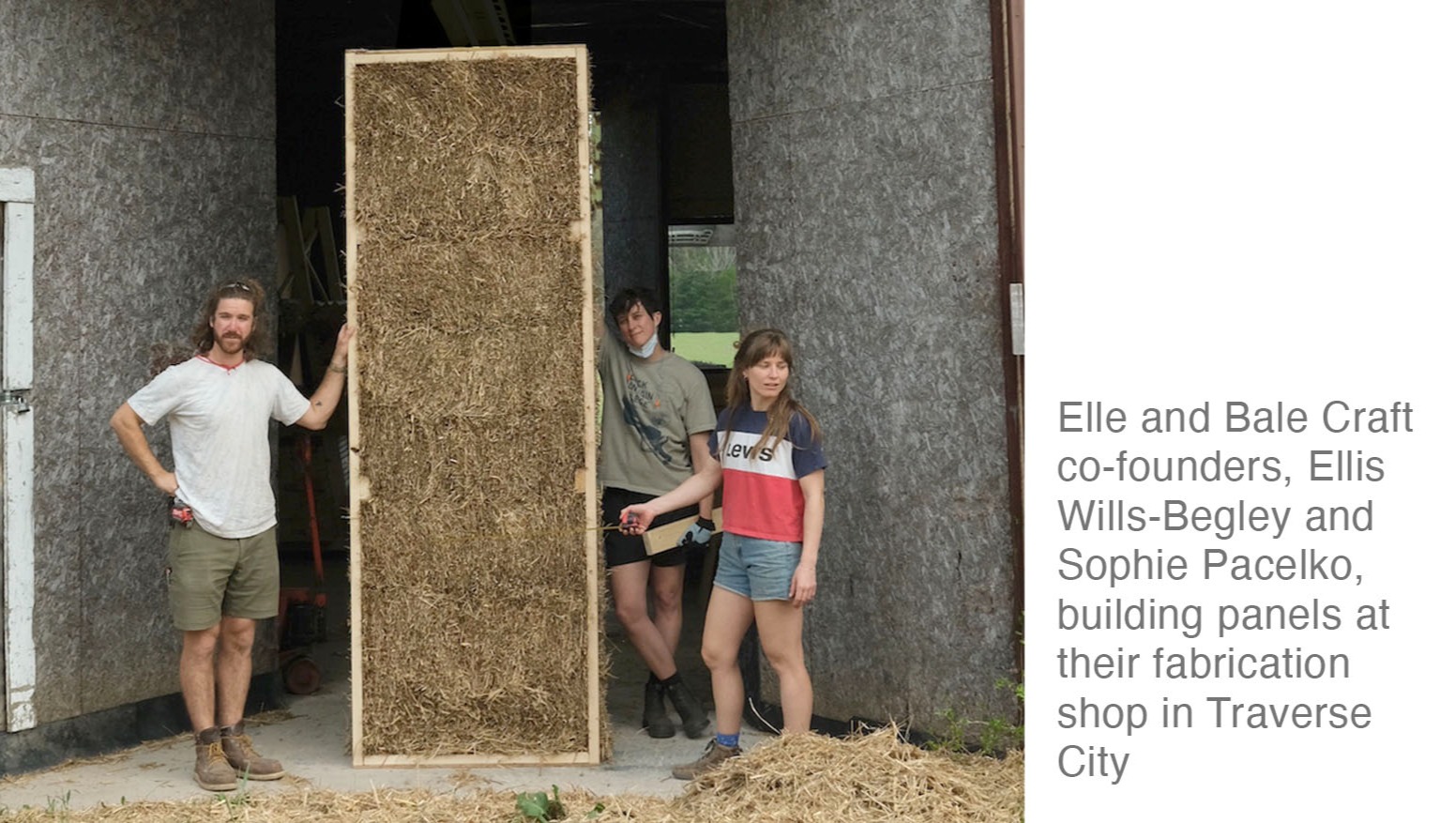
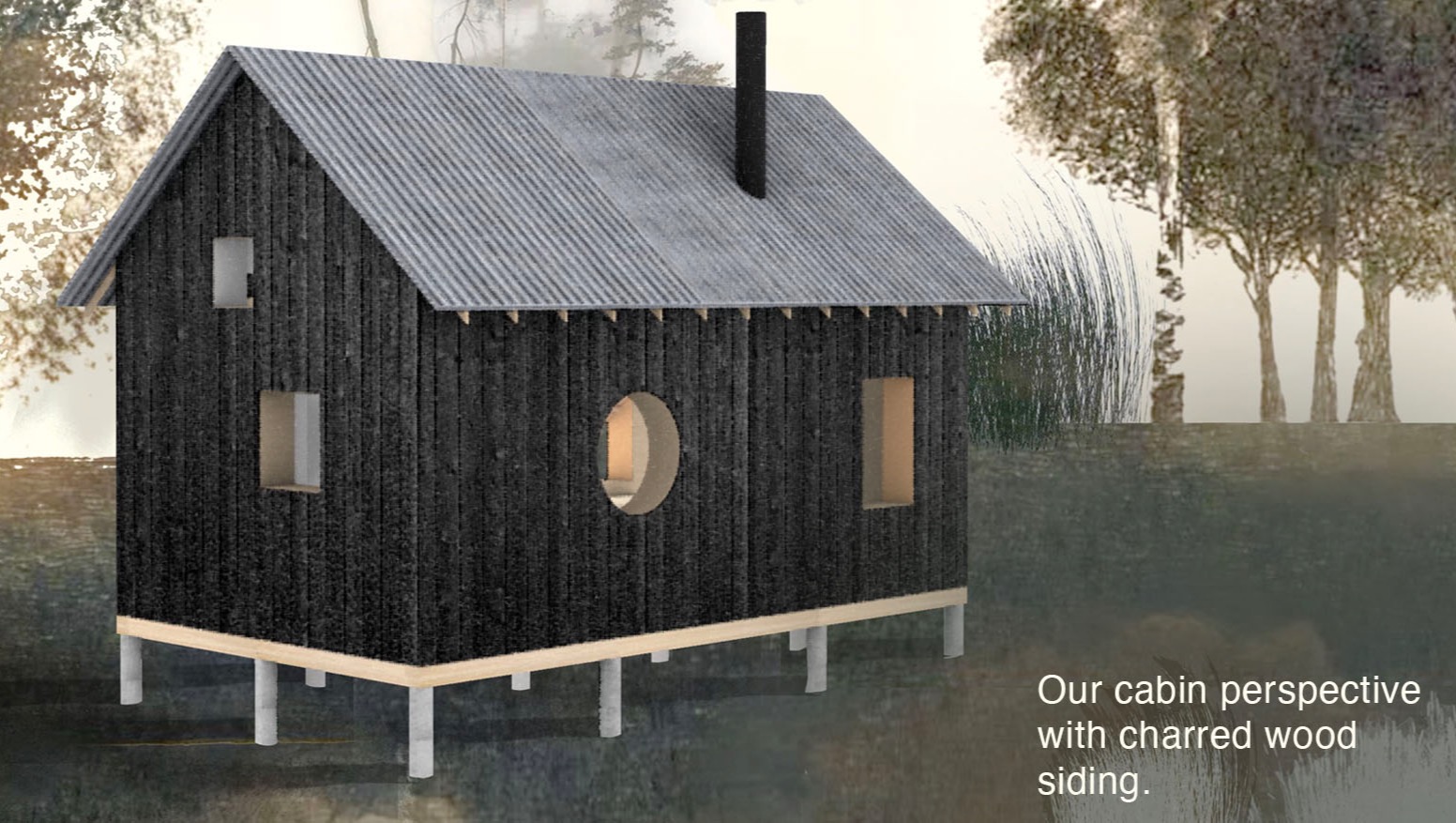
WHAT YOUR DONATION WILL SUPPORT
By raising $15,000 in the next month, we will be able to complete the initial phase of this building project by winter (November 2025).
Your donation will directly contribute to finishing Phase 1 of the building project, which includes:
- Assembling the panels on-site (aka building the cabin!) and hiring help to do so
- Ordering the windows
- Ordering the steel roofing and remainder of our lumber package from a local building supply store
- Applying the base coat of earthen plaster to the straw walls (which includes labor)
- Hiring local people within our network and community for some of the technical work like deck build, roof installation, and milling of lumber
- An artifact illustrating our learnings during the build process
Alongside the Bale Craft team, we have already:
- Fabricated all 32 straw panels for our cabin,
- Prepared and excavated the land around the cabin site,
- Completed the foundation,
- Ordered decking materials and floor insulation,
- Passed our first inspection with the County building department (!!!)
If you cannot donate money but wish to support the project, there are other ways to support!
- We are accepting donations or loans of battery powered tools (we are using Dewalt tools and batteries, but not picky), and a generator. If you have other tools to donate or loan and are wondering if they’d be useful, please reach out
- You will be able to visit the site and see the cabin in October 2025 as part of Traverse City Design Week, when we’ll have an open house. See, touch, smell, ask questions. Stay tuned in to https://www.tcdesignweek.com/ for updates
- Share our fundraiser with your network
- See the FAQ for other ways to contribute :)
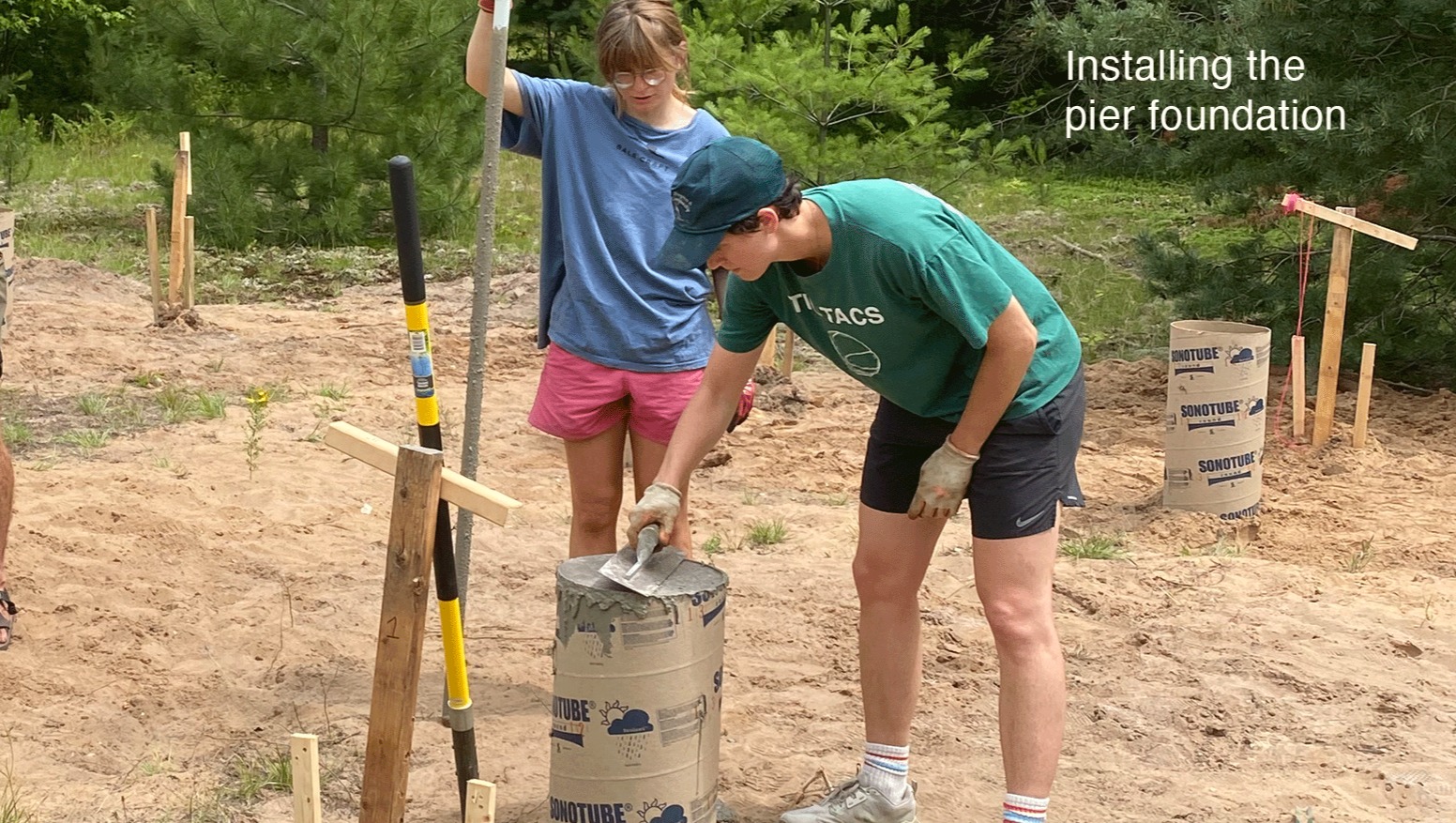
10% of the funds raised will be redirected to Detroit Strawbale Revolution to contribute to their ongoing strawbale community build project in Northwest Detroit.
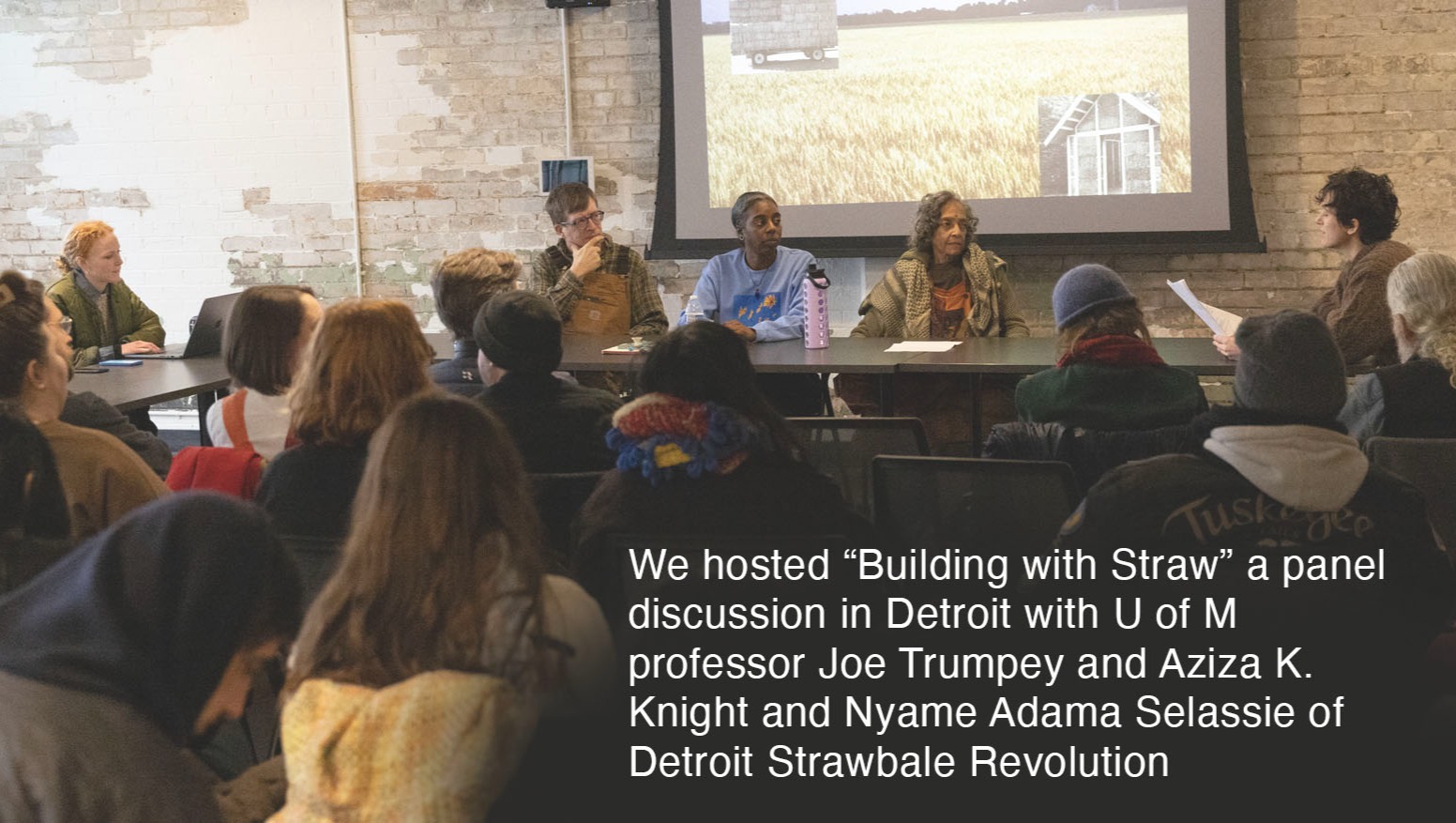
See the FAQ below if you're curious to learn more about who we are and why we’re building with straw.
Thank you so much for your support,
Elle and Ellen
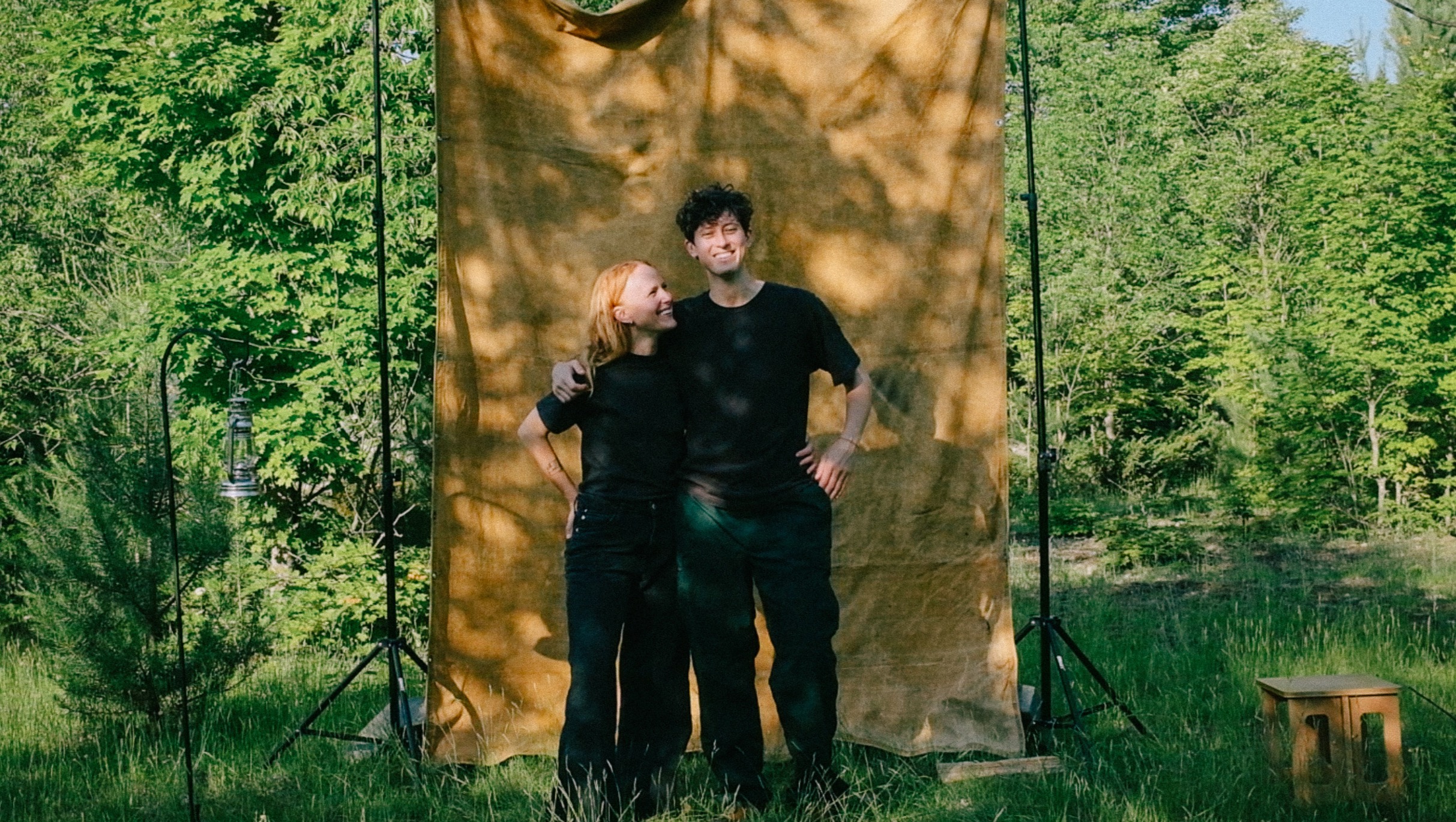
Who are you?
I'm Elle, a writer and affordable housing researcher and am building the cabin with my partner Ellen, an artist and community organizer (yes, those are our actual names and we know it sounds like the start of a 90s sitcom). We have both lived in Detroit for the better part of 10 years, where we still split time. I spent formative years of my life at a small cabin that my grandfather built on the Betsie River about 1 mile from Another Place. I've shared a bit more about the property, this project, and my feelings on it in my newsletter, Another Place Times which you can read here.
Ellen and I have both spent the past several years researching, learning, growing our skills, attending workshops, and connecting with others in preparation for this project.
We’re deeply committed to living smaller, building communally, and advocating for housing that is healthy for humans and ecosystems.
Are we helping you build your home?
This will not be our permanent or primary residence (legal term) / our home for the foreseeable future. For the time being, we still rent in Detroit and Elberta, a village nearby. For the last two summers, we’ve rented an apartment in Elberta as we get to know the area, the property, and the community. Once the cabin is mostly complete, our plan is to spend time there in the summers, host artists and makers there for residencies, and occasionally visit in the winters. Over time, this could become our home, but currently the cabin is permitted with the county as an “accessory structure” so no one can legally live in it full-time.
Why are you building it with straw rather than more common building materials?
I’d rather be in a space built with natural, non-toxic materials than with toxic materials. We don’t want to further contribute carbon emissions and toxic waste to landfills for the purpose of building a cabin. We’re interested in alternative methods of cost-effective housing for people and communities. We want to be active in the build process and understand the materials we’re using; conventional building processes aren’t very beginner-friendly (i.e. drywall installation, stick framing, fiberglass insulation or spray foam insulation all require specialists). We think straw SIPs are a better way to build, we believe in Bale Craft and its potential to create better housing and buildings, and we want to try it.
Why are you building this now?
In short, there's no better time to do the things you want to do than right now. The opportunity arose to collaborate with Bale Craft on an early (the first of its kind) straw panel structure and it aligned with our vision for the property and the type of building we want to do on the property. In order to understand if this is a feasible and viable option for local, healthy, cost-effective (affordable, even) housing, we need to build with it. We believe in this material and method so we've decided to experiment.
Will anyone be able to come see the cabin or stay there in the future?
Yes! We plan to host an open house as part of Traverse City Design Week sometime in October 2025, when anyone will be able to visit Another Place, see the cabin, ask questions, and experience a straw panel building first-hand. When the cabin is complete, we plan to host artists for residencies as well as host retreats etc, but we’re taking that one step at a time. At this time, we don’t plan to rent the cabin out.
Are you involving the local community in this project?
Involving the local community is important to us especially in a rural community like this. We’re hiring local people who have dedicated their careers to sustainable and natural building crafts, such as Thomas of Bungalow Builders, Andi Wilkins, a local earthen plasterer and builder, our neighbor Norm who has a sawmill and will mill red pine logs into flooring, and a myriad of other local friends and community members who have skills and/or the desire to help. We're also choosing to purchase most of our materials, including windows, roofing, and lumber, from local businesses like Honor Onekama Building Supply, Manton Metal, Bear Lake Hardware, Stryker Supply, and sourcing the rest of our materials either from the land or from our community.
Since we’re just learning ourselves, we don’t plan to host workshops as part of this build, but please stay tuned for plans to apply the basecoat of plaster. We’ll need hands (beginner-friendly)!
Why straw? (continued)
Straw as a building material is not a new idea. Straw bale (stacking bales of straw to create a wall), specifically, was developed in Nebraska by settlers who needed to build homes cheaply with the materials that were available around them. This has largely been the ethos around earthen buildings for thousands of years: communities built collectively with the materials that they could find around them. We see this illustrated in adobe structures built by Native peoples of the Southwest, in the longhouses and wigwams built by Potawatomi people in the area where I grew up (which returned to the earth since the structures were built entirely from earthen materials like saplings, cattail reeds, and birch bark siding), mud brick structures (the oldest of which is Shunet el-Zebib in Egypt built in 2700 BC), waddle & daub (mud, earth, straw, timber) used for the past 6,000 years in nearly every region of the world, including in Sweden and the UK where my own ancestors lived & built, and more recently, new technologies like structurally insulated panels (SIPs) also known as straw panels.
Straw has many benefits, one of which is storing carbon (embodied carbon) rather than releasing it into the atmosphere where it causes harm.
There are many reasons straw is a great building material:
- It captures & stores carbon - Straw SIP construction can reduce embodied carbon by 60–70% compared to conventional construction, and in some cases even make a building carbon-negative at the time of completion
- It’s local - straw is a "waste product" from grain production, and a lot of grain is produced in the Midwest, so building with straw supports our local farmers and means the material doesn’t need to be transported long distances
- It’s non-toxic - no chemicals are needed to process the straw or the plaster used to seal the straw wall system
- It’s an excellent insulator and temperature regulator - this means less money on utilities each month
- It’s fire-resistant - Densely packed straw has a fire rating of 2+ hours which is nearly twice as effective as fiberglass insulation, and while no building is fireproof, straw and clay together make it much more likely that a building will survive a fire. Additionally, if it burns, it doesn’t release highly toxic chemicals into the air
- When finished with clay plaster, it’s mold & mildew resistant - mold and mildew are the biggest concerns when building with straw, but if sealed properly with clay plaster the walls can breathe, moisture can escape, and the risk of mold is dramatically reduced
- It’s strong - The oldest known surviving straw-bale building in the U.S. is the Pilgrim Holiness Church in the tiny village of Arthur, Nebraska (which Ellen and I visited in March 2025). It was constructed in 1928 using baled rye straw with thick plaster finishes and still stands today
What’s embodied carbon and how does it play into building a new home?
Embodied carbon refers to the total greenhouse gas emissions (measured as CO₂ equivalents) associated with the materials and construction of a building or product before it’s even used. This includes: extraction and manufacturing of materials, transportation to the site, construction processes like running equipment, maintenance, refurbishment, and eventual demolition or recycling. In short, building a new home requires a lot of energy and typically emits a lot of carbon. The building industry actually comprises 40% of the world’s carbon emissions.
By building these straw panels off-site with local straw, primarily by hand using only battery-powered tools in a low-impact manufacturing space, and transporting them to the build site, we limit the negative impact on the ecosystem around the cabin as well as the emissions during and after construction. We plan to do testing on Bale Craft's specific panels, but comparable panel manufacturers' tests show straw panels store 4 times as much carbon as they emit during production. This means that not only do the panels not emit much carbon during production, but they actually "suck up" carbon, storing it for their lifetime in the walls rather than out in our atmosphere.
Where can I see an example of a straw panel building?
You can see examples of panelized straw buildings and all the different forms they can take on the websites of these established panelized building companies: Ecococon (https://ecococon.eu/us/), New Frameworks (https://www.newframeworks.com/), and Modulina (https://www.modulina.eu/). Soon, you can see one right here in Benzie County.
